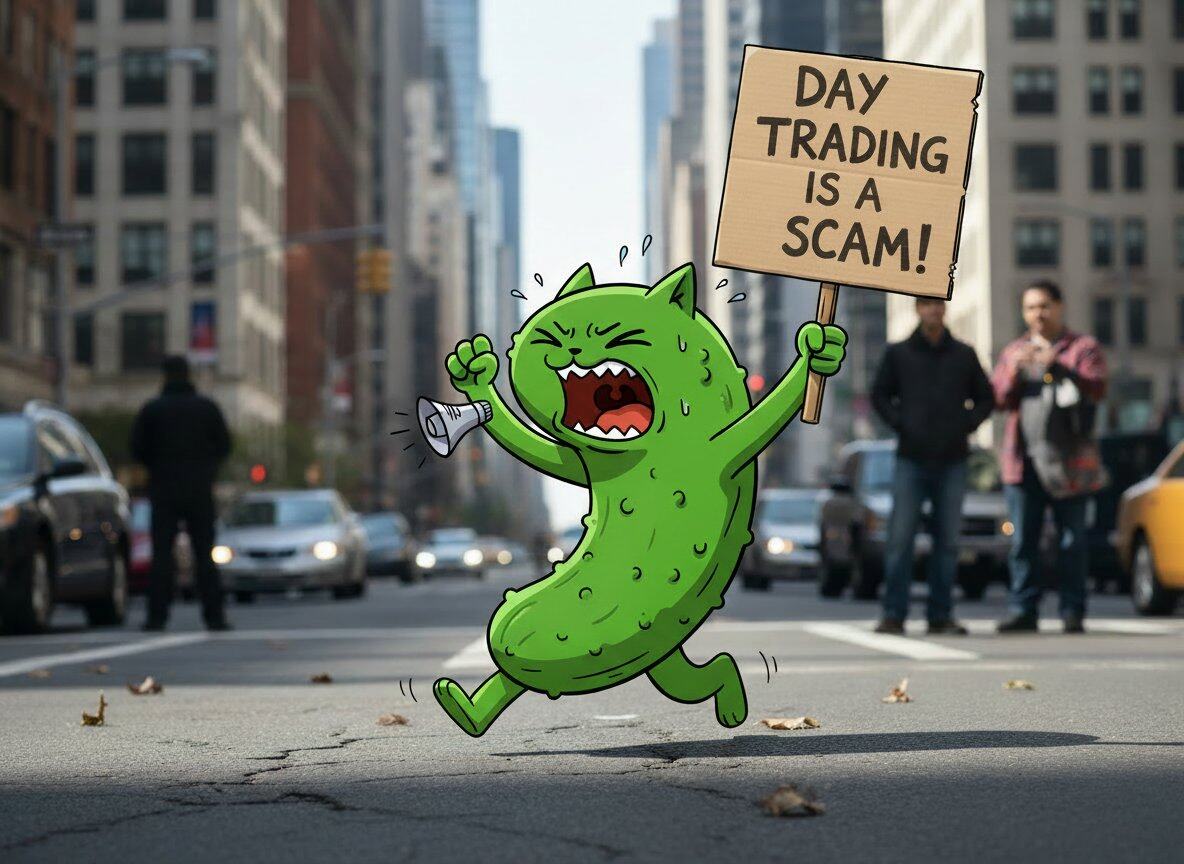Starknet: Full-chain game ecological development advantages and analysis of high-quality projects
After experiencing the death spiral of Gamefi, the market will focus more on full-chain games in 2023. Currently, Starknet has the richest full-chain game ecosystem. So, why is Starknet supported by many full-chain gaming projects? What advantages does it have in developing full-chain games? At the same time, what projects are worthy of our focus? This article explores these questions in depth.
Friends who dont know much about full-chain games as a whole can first read Uncle Jians previous article Eight Questions about Full-chain Games.
Starknet’s advantages in developing full-chain games
On social media, Starknet has gradually been labeled as the most popular development platform for all-chain games. In addition to announcing the migration from Arbiturm to Loot Realms on Starknet in 2021, there are also projects such as Cartridge, Influence, Matchbox DAO, and Briq. and Cafe Cosmos and other full-chain game projects.
What advantages does Starknet have that makes it worthy of being included in many full-chain games? The author believes that there are the following points:
Continuously scalable performance advantages (high TPS, low Gas)
Because in full-chain games, the blockchain is the server of the game, and all player operations need to be completed through interaction with smart contracts. Therefore, if a chain wants to develop a full-chain game ecology, it must meet the performance of high TPS and low Gas at the same time. Requirements, Starknet, which is constantly being upgraded, has such potential.
From the perspective of the underlying algorithm, the core algorithm STARK adopted by Starknet is more suitable for large-scale computing applications, and its average verification time and proof size will continue to decrease as the verification scale expands. As shown in the figure below, when there are 3072 hash invocations, the verification time is 40 milliseconds, with an average of 76.75 times/ms; when there are 49152 hash invocations, the verification time is about 60 milliseconds, with an average of 819.2 times/ms. milliseconds, and the same goes for the proof size. Therefore, in terms of creating large-scale full-chain games, the STARK algorithm has obvious advantages and can achieve high TPS.
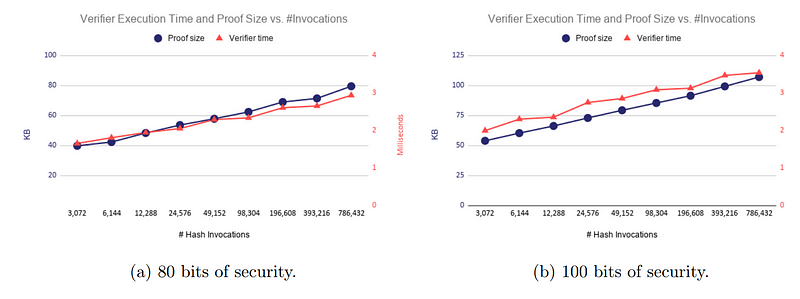
Linear graph of verification time and proof size versus hash calls at different levels of security
At the same time, the recursive proof used by STARK also helps reduce on-chain verification costs. In short, the recursive proof means that multiple upstream STARK proofs can be compressed into one proof. In the end, the chain only needs to verify the single proof generated by the summary to verify the validity of multiple upstream proofs. This means that a single transaction The gas amortized by the transaction is further reduced.
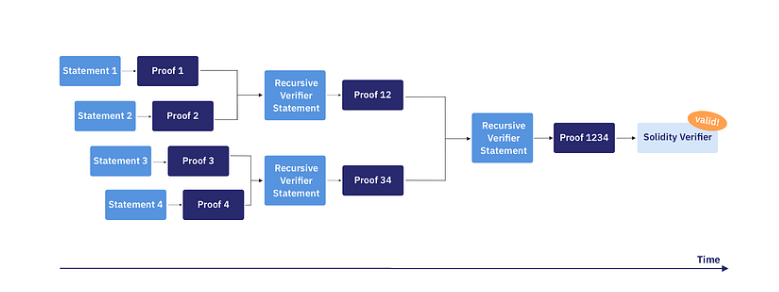
Typical recursive proof process
Judging from actual team actions, Starknet’s Quantum Leap upgrade is also in full swing. At present, the main network has been upgraded to version V 0.12.0, and the test network has been launched to version V 0.12.1, which has been greatly improved in terms of TPS. Transaction costs will also be continuously optimized in the future.
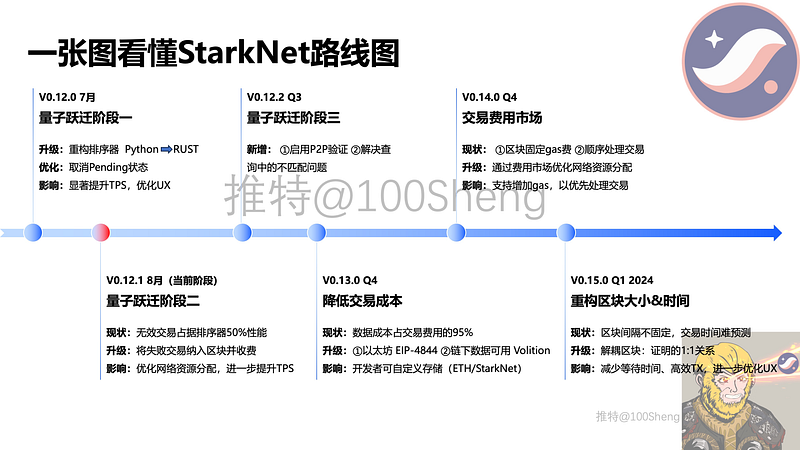
Starknet upgrade roadmap (Source: Twitter user @100 Sheng)
Native account abstraction has unlimited possibilities in improving user experience
If the requirements for blockchain performance are the factors that previously restricted the development of full-chain games from a hardware perspective, then from a user perspective, what restricts the development of full-chain games is a worse user experience than Gamefi.
Take the recently popular Loot Survivor as an example. Every time a user performs an attack, escape or upgrade operation, he or she needs to pop up the wallet to perform a signature authorization transaction. The process is quite cumbersome. Besides, this is just a lightweight game. If a massively multiplayer online full-chain game has this kind of experience, then don’t talk about the playability further.
So, how does Starknet solve such problems for full-chain games? The answer is native account abstraction. Different from Ethereums dual account model (EOA and CA) design, Starknet has only one account design called account contract and implements native account abstraction based on reference to ERC-4337.
Friends who do not understand the abstract concept of accounts can read Uncle Jian’s previous articles Account Abstraction: Simplifying Your Crypto World》。
For example, a creative feature jointly launched by Briq, Loot Realms and Topology teams at the Starknet Hackathon a year and a half ago - Session Key was designed using Starknets native account abstraction, which allows users to There is no need to sign every operation in the full-chain game.
This idea has also been applied this year. The Arcade Account (Arcade Account) developed by the Realms team on August 7 is the first implementation of the session keys function. The improvement to the user experience is also evident in the video posted by the Loot Realms team demonstrating a game of Loot Survivor using an arcade account: no need to sign every attack and no need to wait for too long.

Of course, Starknets native account abstraction improves the user experience of full-chain games far beyond the session key function, and there will be more possibilities in the future.
Crypto Game Engine: Dojo
As we all know, game engines are crucial to game development. With its support, developers do not need to create the basic system (physics simulation, graphics rendering and basic game mechanics) from scratch for each game, so that the saved cost and time can be better invested in the innovation of game content. .
To some extent, the development of traditional commercial games is due to two major game engines: Unity and Unreal Engine. Most of our more familiar games such as Fortnite and Hearthstone are based on them. developing.
From a developers perspective, in order to promote the scale of the full-chain game ecosystem, we need an engine that can help developers reduce the difficulty of game development. Therefore, Dojo, the first full-chain game engine on Starknet jointly developed by Loot Realms, Cartridge and Briq, was officially born in February this year.
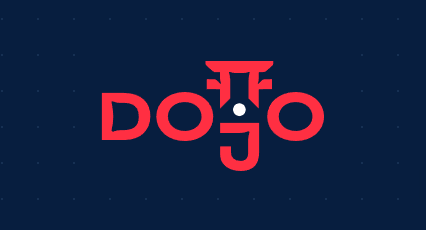
However, unlike traditional game engines, Dojo currently basically does not involve advanced functions such as physical simulation and 3D rendering, because full-chain game development is still in its early stages and is more faced with issues related to the underlying interaction of the blockchain. Therefore, according to official disclosures, Dojo is working on development in four directions:
The first is to build a game-specific L3 to further improve on-chain performance;
The second is to run fraud proof in the game, so that players do not need to wait for on-chain verification for every step of the operation, improving the smoothness of the game;
The third is to execute part of the proof locally on the player, and finally only upload the key ZK proof to the chain, which greatly improves the games running capabilities and player privacy protection;
The fourth is to use storage certificates to share assets. Storage certificates are similar to oracles. They provide evidence of the authenticity of information, but do not require the intervention of a third party. The ownership of assets from different chains can be proved by storage certificates, and users will Able to use their assets in different games on different chains.
As the infrastructure for game development, game engines have always played a key role in the virtuous cycle of helping developers build games - producing hits - attracting more developers. I believe that with the development of Dojo, Starknet’s full-chain game ecological advantages will become more and more obvious.
A programming language friendly to complex full-chain game development: Cairo
In fact, before Dojo, there was another big brother of a full-chain game engine: MUD, and whether it is in terms of ecological quantity or technical maturity, MUD currently basically dominates Dojo.

So why do we still need Dojo? One of the biggest reasons is that unlike MUDs that use the Solidity language, Dojo uses a programming language that is more friendly to complex full-chain game development: Cairo.
Cairo is a smart contract language designed based on STARK and exclusive to Starknet. Every coin has two sides. Although Cairo has a certain learning cost for developers who are used to Solidity, Cairo is more modern than Solidity. Many developers believe that it is similar to the Rust language and can provide more advanced and abstract functions.
For example, the previously mentioned functions such as generating STARK proofs, recursive proofs that can reduce on-chain verification costs, and performing partial proofs locally on players are all implemented through Cairo. At the same time, Cairo is also more versatile than Solidity. It is not only suitable for contract development on Starknet, but can also run provable programs on other large servers or personal devices, and will have broader applications in the future.
Therefore, Cairo will have stronger advantages for complex full-chain games such as massive multiplayer online games. This will also attract more developers to Starknet to realize their dreams of complex and highly playable full-chain games.
Inventory of projects worthy of attention
After understanding the advantages of Starknet in developing full-chain games, let’s take a look at what projects are worthy of attention in the current Starknet full-chain game ecosystem.
Loot Survivor
Loot Survivor is a lightweight game launched by Loot Realms and is currently running on the Starknet testnet.
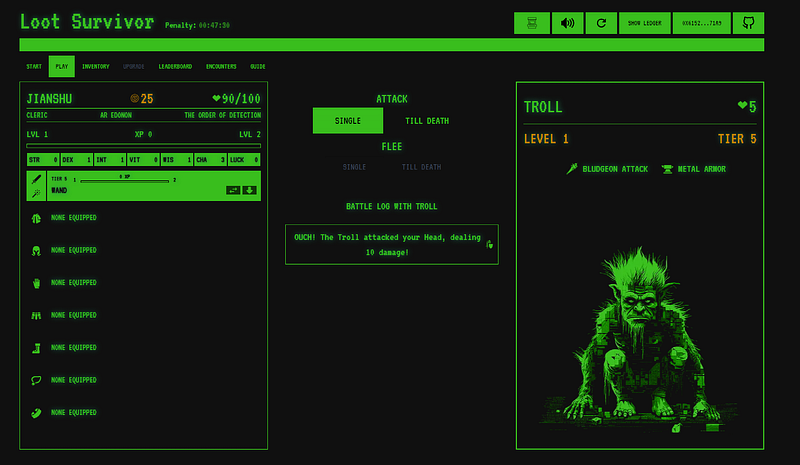
Play to Die mode
Unlike the various X to Earn modes used by Gamefi, Loot Survivor uses the Play to Die mode designed by the Loot Realms team. In simple terms, the gameplay is that players need to spend a small amount of money to cast an on-chain adventurer character. If the adventurer dies in the game, the life of the character will be forfeited, and the player needs to re-create a character and start the game again. At present, there is no very appropriate Chinese translation that can express this model vividly. For the time being, the author will translate it as fight to the death or fight bloody to the end.
Compared to the “Play to Earn” model, which attracts greedy players by creating a wealth effect, the “Play to Die” model is more sustainable and can prosper the creator ecosystem. Because in this mode, if an adventurer dies in the game, the creator of the game will receive a dividend of the funds originally used to cast the adventurer.
Therefore, the quality and popularity of the game in the Play to Die mode will determine the developers remuneration. If the game is not fun, players will not cast on-chain characters, and game developers will not be rewarded. This model will help create a positive and prosperous two-sided market that includes players and creators.
After Loot Survivor is launched on the mainnet, its native token $Lords may be used to mint characters on the chain and empower its tokens.
Influence
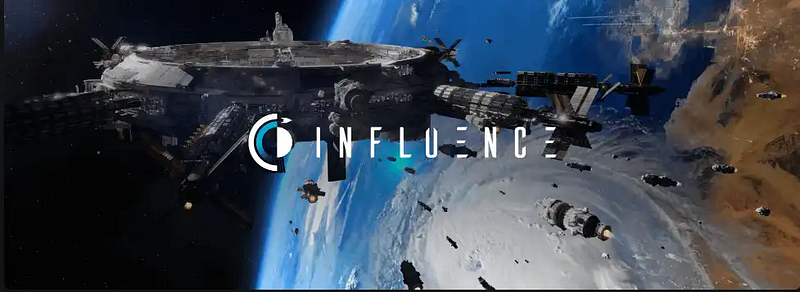
Influence is the most popular massively multiplayer online space strategy game on Starknet and is currently running on the testnet. The game is designed to allow players to colonize asteroids, build infrastructure, accumulate resources and fight other players. But overall, this game is not as easy to operate as Loot Survivor. The author encountered many problems during the experience.
Team situation
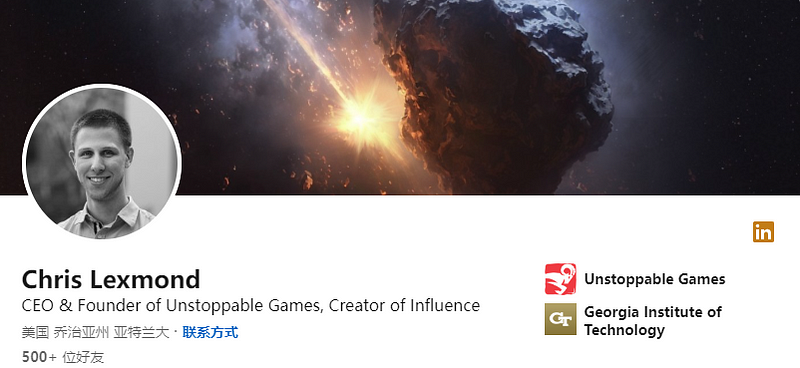
Founder Chris Lexmond has served as chief technology officer and vice president of technology for several technology startups, and other members of the team also have professional backgrounds in producing AAA games. As a start-up team, it is worth looking forward to in terms of team capabilities.
At the same time, the project team has stated that when their native token SWAY is issued, 1% will be used to reward testnet participants.
Briq
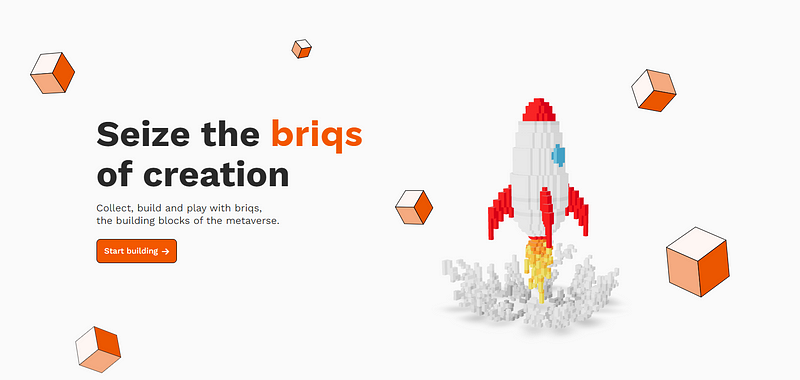
Briq can be compared to an on-chain Lego system, where players can use blocks to build the buildings they want, and at the same time, they can cast their models into an NFT. If you want, you can also combine or disassemble the minted NFT again, which is highly composable.
Briq actually has great potential. It is more like an underlying original protocol. In the future, it can be integrated with a full-chain game, so that NFTs minted by users on Briq can be used in it.
Cartridge

Cartridge is a full-chain game integration platform on Starknet. Players are accustomed to comparing it to the Steam platform for full-chain games. But it goes far beyond its function as a game integration platform. The Cartridge Controller it developed not only helps full-chain games to be easily uploaded to the chain, but also helps improve players’ gaming experience; it participated in the development and construction of the full-chain game engine Dojo; and built its own full-chain Game Roll Your Own (RYO).
Cartridge closed a seed round in June 2022 from investors including Fabric Ventures, Valhalla Venture and Chapter One. I believe that the multi-dimensional Cartridge will play an indispensable role in Starknet’s full-chain gaming ecosystem in the future.
Of course, in addition to the above four, there are many potential full-chain games on Starknet. Interested friends can refer to the table below. Due to space reasons, the author will not go into details here.
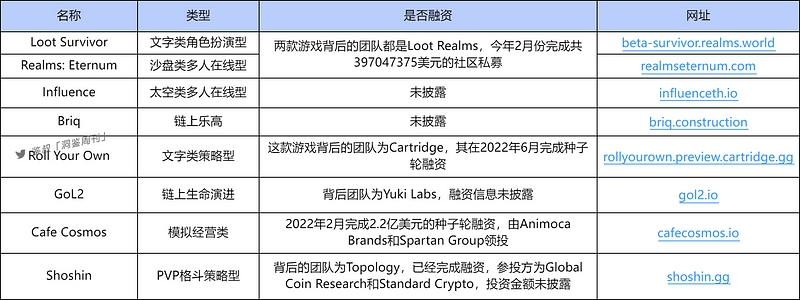
Summary and reflections
At this years ETHCC, Will Robinson from AllianceDao raised four issues that restrict the development of full-chain games in his speech: user experience and user interface issues (UX/UI Problems), scalability issues (Uncertain How to Scale) , lack of game design standards (No Standard Design Patterns) and value uncertainty (Uncertain Value-Add).
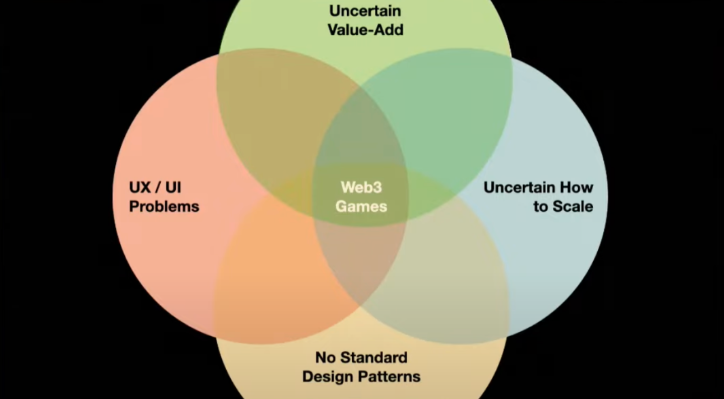
According to the advantages of Starknet in developing full-chain games described above, it can be seen that the first three issues raised by Will Robinson can be effectively solved in the future. But regarding the last question, is there any value in full-chain games? As we all know, blockchain solves the problems of asset ownership and economic system establishment in the virtual world. So for games, in addition to putting in-game assets on the chain, do we really need to move the entire game operation to What about on the chain? Does this really make sense to players? This is not a problem faced by Starknet alone, it is a problem faced by all participants in the entire game ecosystem.
At the end of the article, the author wants to break away from Starknet and try to answer this question. First of all, full-chain games cannot be considered reasonable just because they are conducive to innovation. Such reasons have obvious logical loopholes. While I was thinking hard, I came across a story about Vitalik that inspired me.
As a child, Vitalik was obsessed with playing World of Warcraft, but later he completely abandoned the game because Blizzard modified some characters skills in an upgrade to affect the balance of the game. This made Vitalik quite angry. After sending an email to contact Blizzards engineers for the first time to no avail, he never played the game again. At the same time, he also realized that there was serious centralization in traditional games, and the players right to speak was quite weak.
Of course, players voice and freedom in traditional games have also been increasing in recent years, thanks to the popularity of the concept of user-generated content (UGC). However, this degree of freedom is obviously not enough. Players need real game autonomy. . I think this is the opportunity and significance of the existence of full-chain games.
Full-chain games can bring UGC to a whole new level. It only builds core gameplay that cannot be tampered with on the blockchain, and transfers the design of the game to players to the maximum extent, making content re-creation infinitely malleable. . Take the full-chain game Dark Forest as an example. Players can do whatever they want as long as they abide by the most basic rules. For example, they can create their own asset trading market in the game, develop tools to help them automate the game, and even Create new games within the game. There are currently nearly a hundred Dark Forest plug-ins on the market. Players can use these plug-ins to visualize opponent territories, automate wars, match transactions, etc.
However, this is not the final state of the full-chain game, because the above operations can only be realized by those with a coding foundation. However, I believe that ordinary players will be able to build everything they imagine in the full-chain game in the future.
Because you believe, you see.
Disclaimer: All contents on this website may involve project risk matters and are for science and reference purposes only and do not constitute any investment advice. Please treat it rationally, establish a correct investment philosophy, and increase your awareness of risk prevention. It is recommended to comprehensively consider various relevant factors, including but not limited to personal purchasing purpose and risk tolerance, before interacting and holding. Copyright notice: The copyright of the quoted information belongs to the original media and author. Without the consent of Jian Shu J Club, other media, websites or individuals are not allowed to reprint the articles on this site. Jian Shu J Club reserves the right to pursue legal liability for the above-mentioned acts.


